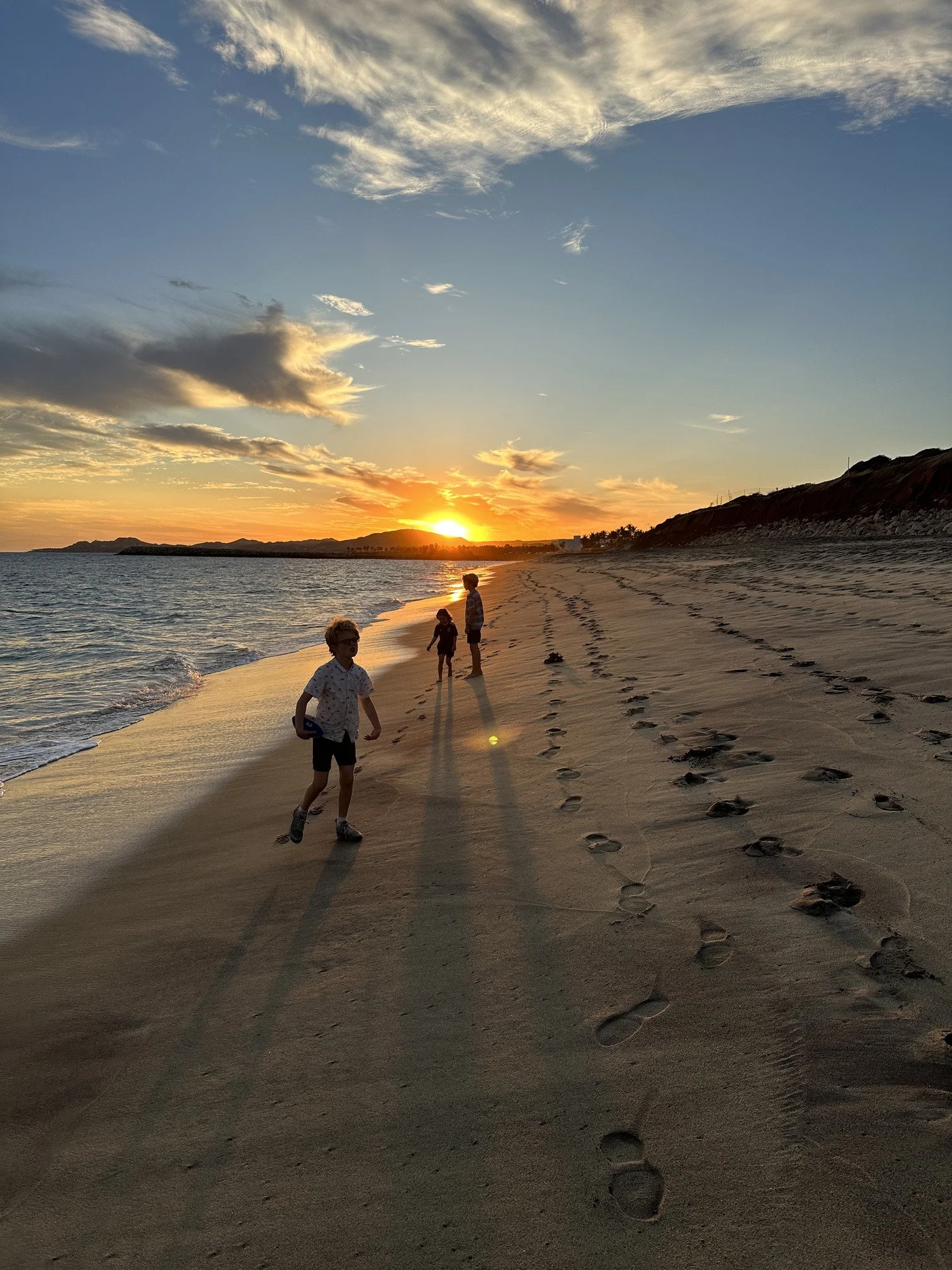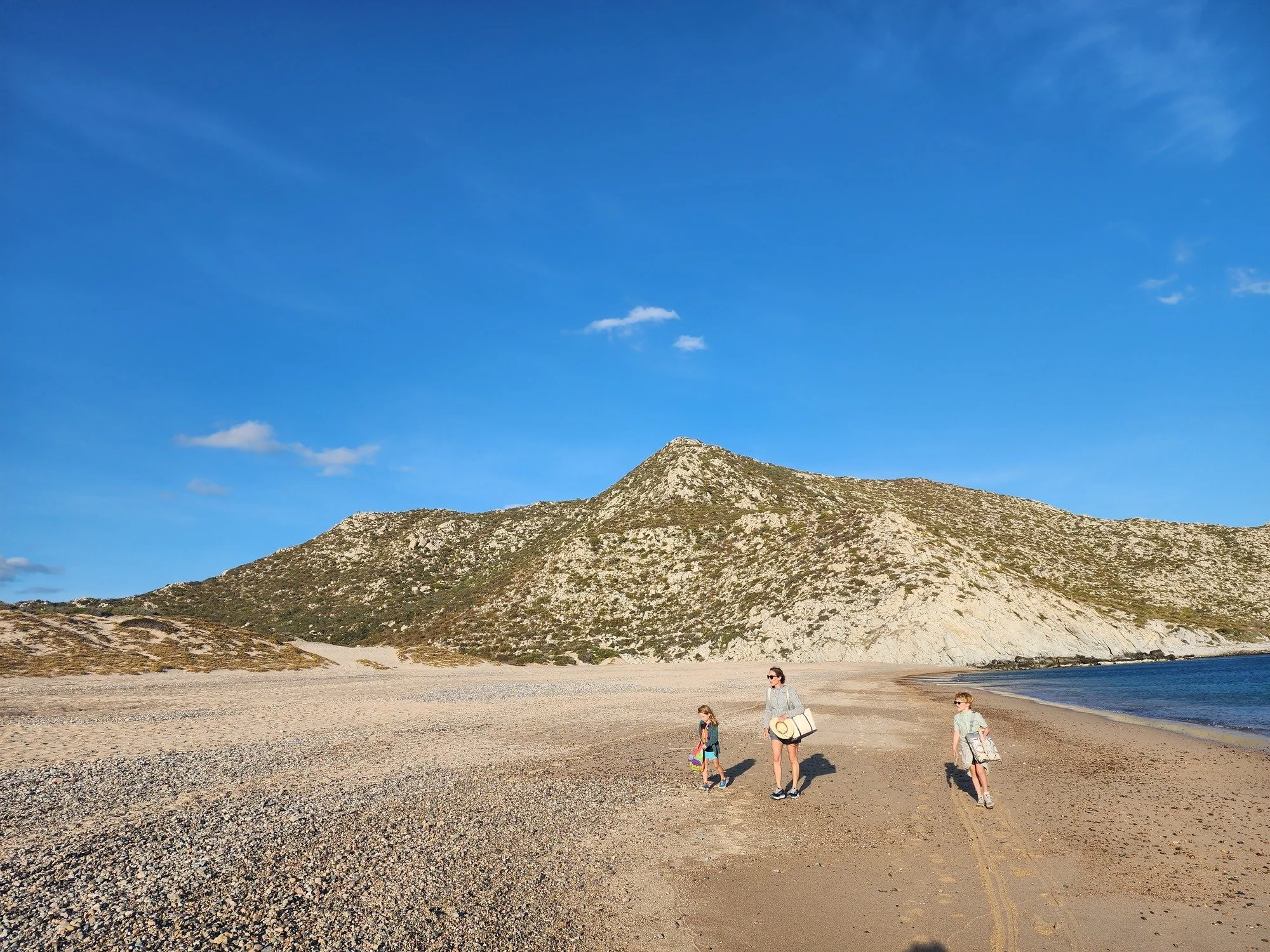Los Cabos and Power Failure
Power Failure
While we are living on a sailboat, we still use electricity. For that matter, we also use diesel propulsion to get us around when the wind isn’t quite right.
We use electricity to keep our food cold (refrigerator and freezer), the lights on at night, our instruments and radio working, to make water so we can drink, and more. We store our electricity in big batteries that have chemistry similar to modern electronics (lithium ion). We can generate electricity in a variety of ways. When we motor, the main diesel engine spins an alternator that spits out electricity. We have solar panels and a hydrogenator that spins when we are under sail. But when all of that isn’t enough, we also have a “generator” that consists of a small diesel engine and big alternator to produce electricity quickly and efficiently.
This generator is the current fly in our ointment. It’s a Cummins Onan and can produce 8000 watts and delivers it as 230V / 50hz alternator current. The boat was built in France and so it has European power. Higher voltage means smaller wires and 50hz means everything is just a bit more complicated. This generator’s output is piped through battery chargers to convert the AC to DC to charge the batteries.
We use the generator when we are on anchor. After a day or so of not running the engine, we need to charge up the batteries as the solar panels do not produce enough energy to keep them full. Likewise, when we run a power hog like the water maker, we need to start up the generator to ensure we don’t sap the batteries.
The problem started when we were coming down the remote coast of Baja. After a great day exploring, we came back to the boat and needed to charge the batteries. We tried to fire it up and promptly got an error. It had lost “RPM sense” – which means it couldn’t figure out how fast it was running. Future attempts soon also yielded a “Loss of AC voltage” error.
We headed to Cabo where we could get help from knowledgeable mechanics. After many visits with the Cummins team, it was determined that the rotor / stator had failed and had to be replaced. This – the rotor / stator – is essentially half of the unit. One half is a small diesel engine which, in turn, spins the rotor / stator to produce electricity. A rotor failure is a pretty serious and unlucky problem in a two year old generator – particularly as we learned that this part is not in stock and would need to be manufactured with at least a 60 day lead time.
(UPDATE -- It is now mid-January, and we have no timeline from Cummins for the producing the part or completing the repair, despite this being an in warranty and currently produced unit. Beyond frustrating. Everyone I have spoken to and worked with at Cummins has been friendly, respectful, and responsive – but somehow we still find ourselves in limbo ~40 days on.)
Los Cabos
We had always planned to stop in Los Cabos, but our stay was extended due to the generator problems. We stayed two weeks, spending it at the dock in Puerto Los Cabos just east of San Jose del Cabo, which itself is east of Cabo San Lucas. It’s a human-made marina which caters mostly to sports fishing boats. We had to be on the dock for the mechanic visits so we settled in to provide the most chance that we could get it repaired.
Map of Los Cabos
Cabo San Lucas is a very popular destination and it feels like it. San Jose del Cabo is like the slightly quieter neighbor with an old town at its center. It has a charming town square with shops and restaurants at its core–with neighborhoods, hotels, and big box stores spreading out from here. Puerto Los Cabos is a new set of development carved out of the desert-like land that surrounds San Jose del Cabo to the north and east.
When not trying to fix the generator, we had a great time. We ate like kings – amazing sushi, delicious pastries, terrific tacos and more. We played soccer in the mornings on the one big grassy field near the slip.
Morning was the time to play soccer, it got hot in the afternoon sun
We enjoyed Flora Farms, which really is a cool place nestled in the hills - with great good a beautiful gardens.
Holden gazing at one of the many paths at Flora Farms
We walked out to a big, beautiful undeveloped white sand beach west of us in the afternoon and swam in the warm water. We also ventured east along the beach, walking vast stretches of beach before arriving at the hotels far to the east.
We rented a car and explored the east cape – driving a big loop north and then east and then south. It was a beautiful, partially developed arid landscape. Paved roads gave way to dirt roads gave way to sandy paths.
We stopped and spent an afternoon snorkeling at Los Frailes, a small nook bay. A couple of afternoons, we enjoyed great snorkeling at Playa el Chileno, halfway between Cabo and San Jose.
By mid-December we were ready to go. We had originally planned to head north to La Paz, but the “Northers” wouldn’t let up. These “Northers” are strong winds that push down the full length of the Sea of Cortez. As they reach the southern end of the Sea, they accelerate around the cape just east of San Jose del Cabo. In addition to strong winds, the “Northers” push walls of water from the Sea that then slam into the Pacific. This means that a passage north to La Paz would be hard, if not dangerous.
Given the weather, we decided to skip the Sea and head across to Mazatlán. We were ready to be out of the marina and back on anchor. We were going to have to modify our power consumption given our non-functioning generator, but we weren’t going to let the generator stop our trip any longer. We likely would be coming back this way and would get it repaired then (fingers-crossed).
With a good forecast – a moderating Norther – we dropped our lines and set a course just north of east, heading for Mazatlán. We appreciated our time in Los Cabos, learning a ton about generators and how they work / don’t work, and exploring the beautiful landscape.








